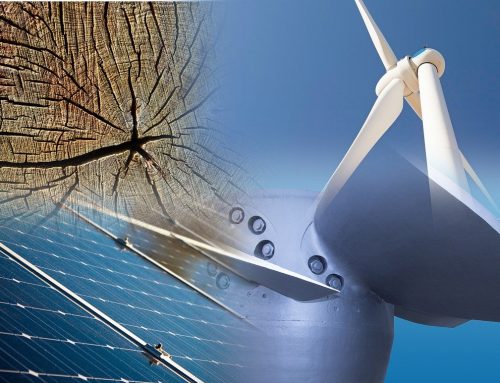The primary legal framework for the transition of Germany’s power system is the so-called Renewable Energy Law (Erneuerbare Energien Gesetz – EEG). In effect since April 1st 2000, the EEG established differentiated feed-in tariffs offering lucrative returns for all kinds of renewable energy investments. Not only commercial investors, but also farmers, municipal energy companies as well as private households enjoyed long-term and reliable investment conditions, in particular preferential access to the grid and price guarantees lasting 20 years. Today, more than 25 percent of Germany’s power generation is based on renewable sources. Proceeding to a largely (in the long run entirely) green power system has become a realistic option.
From the beginning up to the presence feed-in tariffs have been constantly adapted to technological progress and cost reductions. The guiding principle was and still is: the later you start, the lower the guaranteed price. Thus, the solar power feed-in tariff for example fell from nearly 60 Eurocents per kilowatt hour for investors starting in 2000 to less than 20 Eurocents for investors starting today – 15 to 10 Eurocents to be reached in the upcoming years.
Despite cost reductions the financial burden of quickly increasing the share of renewable energy is considerable. In principle, the difference between market price and the (higher) feed-in tariffs should be paid by all customers according to their amount of power used. In practice however, there are many exemptions for large corporations. Therefore, it is mainly the private customer who carries the extra costs. In 2013 these extra costs will reach the level of about 20 percent of the individual power bill.
In Germany’s current debate on energy policies the cost argument is the hot topic. Because of the unequal distribution of transition costs the Renewable Energy Law is under attack. The strategy of large, traditional power corporations is clear: scandalize the costs, speed-down the transition and, ultimately, take over renewables. Of course, scandalizing costs is only possible as long as all the hidden costs of fossil and nuclear energy sources are not part of the debate. Balancing and comparing the entire social costs of all energy sources presents a different picture: even in cost terms renewables are the first choice.
This first choice is currently defended by a broad network of vested interests (green energy suppliers, solar panel and wind mill producers), NGOs, local initiatives, center-left and left political parties and, most importantly, the majority of the people. At present, it seems likely that this broad network will be able to defend the energy transition. The unresolved question, however, is: Will this transition move on with strong decentralization, with many actors coming close to energy autonomy and practicing energy democracy?
One of the most interesting and promising features for Germany’s energy transition has been the establishment of hundreds of local and regional initiatives defining and practicing “100-Percent-Renewable-Action-Plans”. These initiatives include mayors, city and county representatives, local businesses, public companies, energy cooperatives and numerous small and medium-sized investors of all kinds. The most advanced examples of energy democracy demonstrate that a multiple “return on initiative” is possible: acting against climate change and creating healthier environments, lowering energy prices through combined heat and power generation, more local jobs and income, increased local taxes, mobilizing regional potentials instead of feeding fossil cartels.
So far, unions do not play a major role in the grassroots part of Germany’s energy transition. Politically, however, they do support the Renewable Energy Law. This comes to no surprise, because the clean power sector by far outnumbers the traditional power sector in terms of total jobs, and particularly in terms of job growth. Since 2000, more than 200.000 jobs have been created by producers and appliers of wind mills, solar panels and biomass equipment. Nonetheless, this success has its dark sides: poorly paid jobs, low degrees of unionization, job uncertainty in underfinanced new companies.
In the upcoming months and years, it will be vital to broaden the social basis of the energy transition. Power prices must remain affordable for low-income households. Green jobs must become good jobs. The entire distribution of transition costs and transition benefits has to be a top priority of all ecologically concerned activists. Today’s experiences shape future ambitions. If a fossil, centralized power system can be transformed into a clean, decentralized and fair system, then the challenges ahead, the overhaul of the traffic system for example and ultimately the grand transformation of most industrial processes, will be met with confidence.
What are the lessons for those interested in Germany’s energy transition performance? 1) Establish legal frameworks that provide sufficient incentives for all sorts of new and independently acting renewable energy providers. 2) Support innovation, diversification and decentralization with feed-in tariffs and reject quota systems. 3) Insist on clean energies’ preference in terms of global challenges and in terms of overall cost advantages. 4) Always keep in mind that energy transition is not only a technological, but also a deeply social issue. Distribute costs and benefits with fairness, with particular regard to low incomes. 5) Create alliances that show in practice what energy democracy is all about: renewable energy under regional control, diversified ownership with strong elements of direct public responsibility (grids, back-up facilities), more local jobs and income through “import substitution” (self-produced energy instead of importing coal, oil and gas), energy self-determination reducing and, finally, ending the dependence on dirty cartels.





